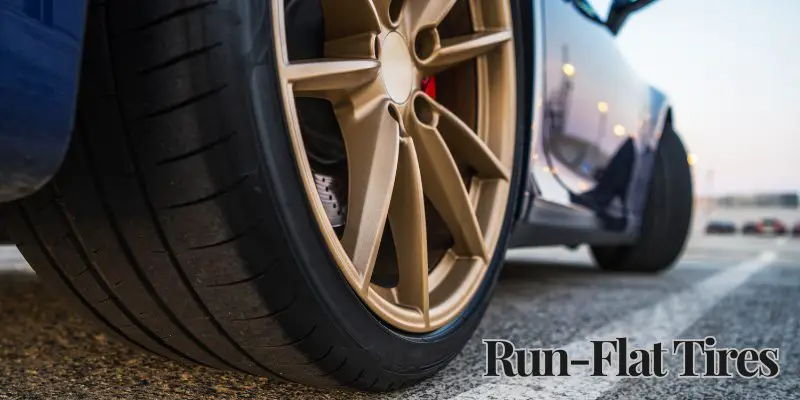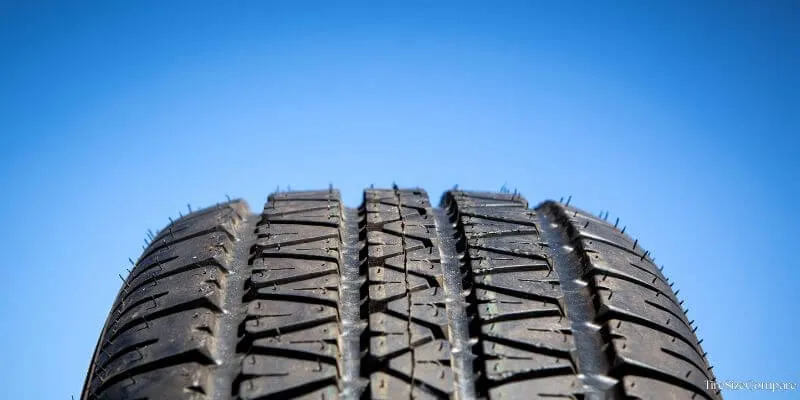Run-Flat Tires

Run-flat tires are a innovative technology that allows you to keep driving your vehicle even after a puncture or loss of tire pressure. These tires are designed with reinforced sidewalls that can support the weight of the car without air pressure, giving you the ability to safely drive to a repair shop or your destination. Run-flat tires provide added safety, convenience, and peace of mind for drivers on the road.
How Do Run-Flat Tires Work?
The secret behind run-flat tires lies in their unique construction. These tires have reinforced sidewalls made with special rubber compounds and additional layers of heat-resistant material.
When a run-flat tire loses air pressure due to a puncture or other damage, the reinforced sidewalls are strong enough to temporarily carry the weight of the vehicle. This allows you to continue driving at a reduced speed, typically up to 50 miles, until you can safely change the tire or reach a service station.
Advantages of Run-Flat Tires
- Enhanced Safety: With run-flat tires, you can avoid the dangerous situation of being stranded on the side of the road with a flat tire. This is especially important in areas where stopping may be hazardous or help may not be readily available.
- Convenience: Run-flat tires eliminate the need to immediately change a flat tire, saving you time and effort. You can continue driving to a more convenient and safer location to address the issue.
- Space Savings: Since run-flat tires allow you to drive without a spare tire, they free up valuable space in your vehicle that would otherwise be occupied by a spare tire and jack.

Limitations and Considerations
While run-flat tires offer significant benefits, there are a few things to keep in mind:
- Limited Distance: Run-flat tires are designed to be driven for a limited distance after a puncture, usually around 50 miles at a reduced speed. It’s crucial to get the tire repaired or replaced as soon as possible.
- Higher Cost: Due to their advanced technology and construction, run-flat tires tend to be more expensive than traditional tires. However, the added safety and convenience may justify the extra cost for many drivers.
- Reduced Tread Life: The reinforced sidewalls in run-flat tires can result in a slightly stiffer ride and may lead to faster tread wear compared to standard tires. Regular tire rotations and proper inflation can help extend their lifespan.
Real-World Applications
Run-flat tires have become increasingly popular in recent years, with many car manufacturers offering them as standard or optional equipment. Luxury vehicles, sports cars, and even some family sedans now come equipped with run-flat tires. For example, BMW has been a strong proponent of run-flat technology, offering it on many of their models to enhance driver safety and convenience.

Can I Mix Run-Flat Tires With Regular Tires?
It’s not recommended to mix run-flat tires with regular tires. Run-flat tires have unique handling characteristics, and mixing them with standard tires can lead to uneven wear and potentially affect vehicle stability.
How Long Can I Drive on a Punctured Run-Flat Tire?
Most run-flat tires are designed to be driven for up to 50 miles at a reduced speed after a puncture. However, it’s important to consult your vehicle’s owner’s manual and follow the specific guidelines for your tire model.
Are Run-Flat Tires Repairable After a Puncture?
In most cases, run-flat tires are not repairable due to the potential damage to the reinforced sidewalls. If a run-flat tire loses air pressure, it’s generally recommended to replace it with a new one.
Conclusion
Run-flat tires offer a significant advancement in tire technology, providing drivers with enhanced safety, convenience, and peace of mind.
By allowing you to continue driving after a puncture, run-flat tires minimize the risk of being stranded on the roadside and provide a more comfortable and secure driving experience.
While they may have some limitations and a higher upfront cost, the benefits of run-flat tires make them an attractive option for many vehicle owners. As technology continues to evolve, run-flat tires are likely to become even more prevalent, offering drivers a safer and more reliable way to navigate the roads.



